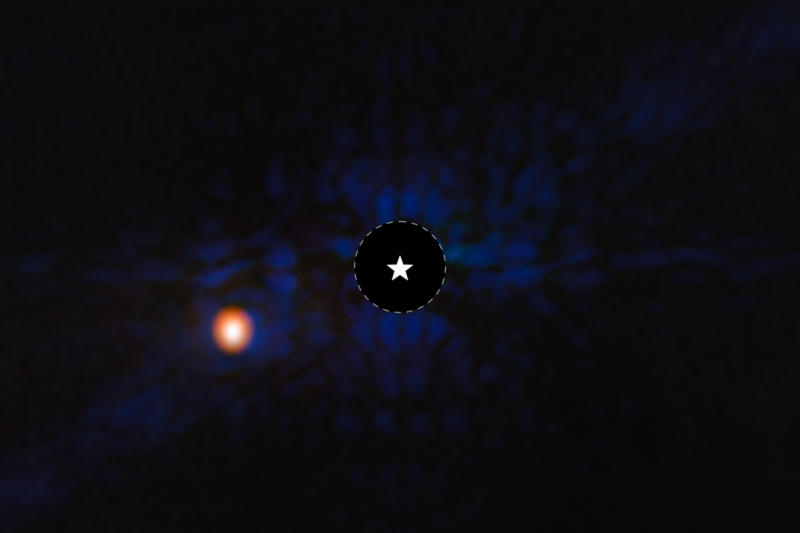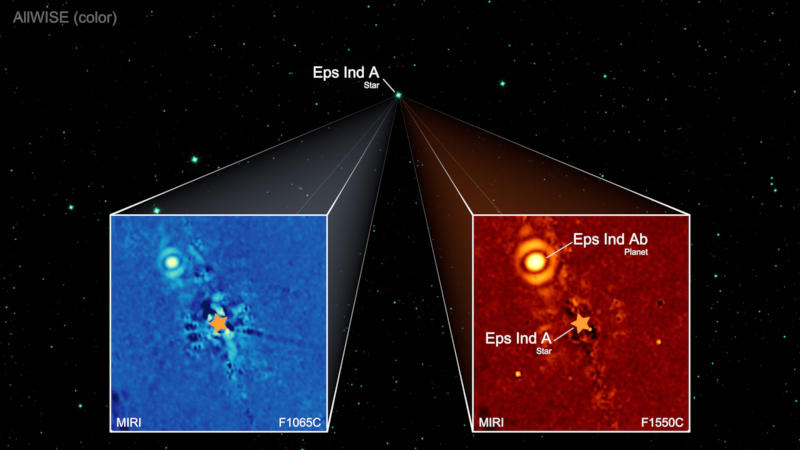The James Webb Space Telescope (JWST) has captured a direct image of an exoplanet six times larger than Jupiter—the oldest and coolest planet outside our solar system to be directly observed, and it’s not where astronomers expected.

Image source: webbtelescope.org
Usually, planets outside the solar system are discovered by studying their effect on the light of their star, but sometimes it is possible to photograph them directly. This is not easy – it must be large enough and orbit far enough from its star so that its light is not drowned out by the light from the planet. Previously, it had only been possible to directly image massive objects relatively soon after their formation, when the heat released when matter collapses into a planet causes it to glow in the infrared. But the high sensitivity of the James Webb allowed us to overcome these limits: the new image showed an exoplanet about as old as those in the Solar System.
We are talking about an object in the star system Epsilon Indi A. The star is located 11.73 light years from Earth, which is extremely close by cosmic standards, and is similar in size and age to the Sun. According to previous calculations by scientists, a large exoplanet should be located in the star’s system, influencing its position. And they actually found it there, but it turned out to be completely different from what scientists had expected.
«It is about twice as massive, a little farther from its star and has a different orbit than expected,” said Elisabeth Matthews of the Max Planck Institute for Astronomy (Germany), one of the study’s authors.

Image source: mpia.de
At this time, it has not been possible to explain this discrepancy. The likelihood that this is an object that accidentally fell into the field of view of the telescope is extremely small. And a re-analysis of data on the movement of the star Epsilon Indiani showed that there is most likely only one large exoplanet in the system – there may be others, but they are much smaller. Therefore, it was given the name Epsilon Indian Ab, which was the name the hypothetical planet had before the discovery was made.
The present Epsilon Indianis Ab is a large planet with an estimated mass of six times that of Jupiter. It orbits at the same distance from its star as our Neptune is from the Sun. The planet is quite bright in the infrared, which corresponds to a temperature of approximately 275 K (1.85 °C), which means that we are talking about the coldest exoplanet that has been photographed directly.
Interestingly, the object could not be detected in one region of the spectrum – in wavelengths from 3.5 to 5 microns – a sign that it contains high levels of elements heavier than helium and a high ratio of carbon to oxygen. The gap in the spectrum may affect the estimate of the object’s age, so additional observations will have to be made to explain it. The scientists note that while James Webb’s instruments for directly observing exoplanets have proven effective, it is now important to get images of other similar cold objects, and one should be careful about extrapolating from observations of just one object.